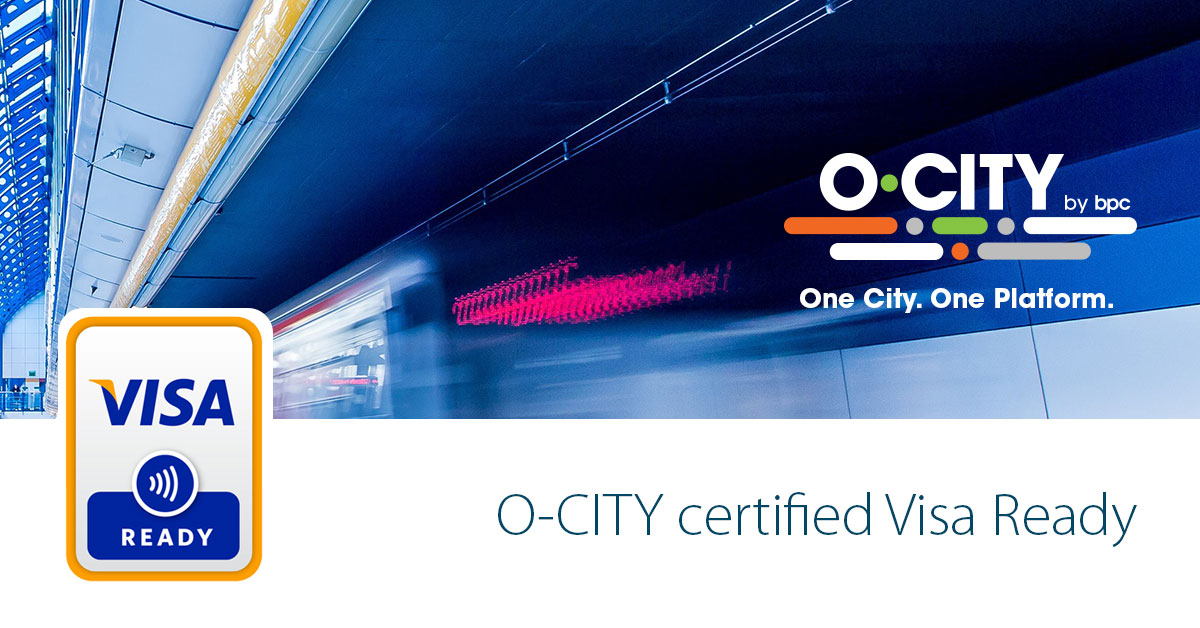Our brochures
Adopted by more than 120 cities worldwide, O-CITY is an innovative automated fare collection solution for public transport operators and municipalities. The platform leverages a best of breed payment solution from payment expert BPC available in more than 80 countries.
We serve
- Transport Operators
- Municipalities
- Parking operators
- Railway operators
- Metro operators
- Bank acquirers
- Entertainment
- Education
If you'd like to know more about what we can do for you, have a look at these brochures.

About O-CITY
‘We believe in smart, digital, connected cities where citizens can openly move and live at the touch of a button, a tap or a swipe, without the need for cash.’ Mobility is one of the key success factors for economic growth; therefore, it is increasingly becoming an issue that governments and public transportation companies need to address.
For transport agencies
With more than half of the world’s population now living in urban centres, transport operators are under increasing pressure to address challenges relating to aging infrastructure (such as crowded public transport systems) while tackling increasing rates of pollution due to the rise in private car usage. In this context London, Singapore, Moscow and Dubai are setting new trends by competing on quality of life, promising to increase the wellbeing of their residents and turning to smart technology to ease movements.
For government and public administrations
Across the world, public administrations are digitising service delivery in response to demand from citizens and as a consequence of globalisation, urbanisation, economic necessity and technological progress. Government agencies continually searching for instruments to improve social welfare provision and distribution transparency.
For parking
Increasing urbanisation and the technological advancement of cities creates challenges for governments, businesses and commuters. Citizens often choose to use private transport as a reaction to less available and convenient public transport options. This has increased the pressure on governments and local authorities to find a solution. The difficulty lies in simplifying the technology to make it convenient and accessible for the end-user, while enabling the service provider to automate the service.
For railway operators
Transport networks rely on attracting passengers to remain competitive. Speed, comfort and flexibility are key criteria in the eyes of passengers. With many cities suffering from ageing infrastructure and the development of ride hailing and shared transport services, rail operators need to strengthen their proposition and attract new passengers.
For metro service providers
Mobility is one of the key elements of any government’s economic strategy. Creating an urban environment in which both residents and tourists can move around freely implies the elimination of obstacles and barriers, including removing barriers to payment.
For smart ecosystems
The evolution of technology has accelerated urbanisation significantly. More and more people
are motivated to live in cities, leaving suburban and rural areas in search of a high-tech future. However, city public service providers are not always prepared for providing such services (for example, parking or transport) on an increased scale and on-demand.
For education
Digital transformation has had a tremendous impact on industry verticals such as commerce, banking and mobility. The way we engage, shop, and entertain ourselves has dramatically changed with the introduction of new technologies such as chat and video conferencing.
For entertainment
When selecting a city to live in, prospective residents will have a variety of criteria, including rent or property prices; safety; proximity to work or school; access to public transport; and entertainment attractions. Cities are facing great challenges keeping up with the entertainment expectations of their residents.









